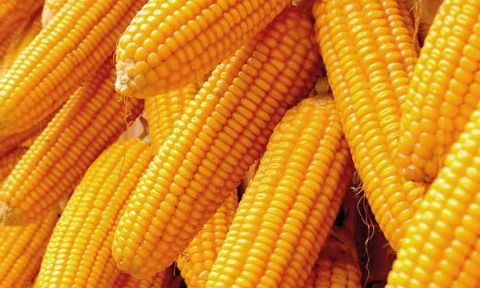In the tropics, such as Nigeria, goats have some special characteristic features that make it easy for them thrive in any environment. Additionally, these features contribute to the ability of these animals to tolerate various kinds of environment (friendly and/or harsh). For example, goats have tough skin coat to withstand high temperature and cold, and they are good scavengers.
Breeds of goat are classified under Local breeds and Exotic breeds. For the purpose of this article and for the fact that I’m a Nigerian, I would be describing the local breeds in Nigeria.
Some Common Goat Breeds in Nigeria and West Africa include:
1. Sahelian Goats
II. Maradi or Red Sokoto
 This breed of goat is found mostly in the Sokoto area of Nigeria and part of the Niger republic. It is the most well defined breed of goat perhaps in Africa. It has red skin coat that is of good quality for leather production. Other varieties of the breed are the Kano brown or Boronu white. Both sexes carry horns with short ears that are horizontally positioned. At maturity, Maradi goats weigh between 20 and 30 kg.
This breed of goat is found mostly in the Sokoto area of Nigeria and part of the Niger republic. It is the most well defined breed of goat perhaps in Africa. It has red skin coat that is of good quality for leather production. Other varieties of the breed are the Kano brown or Boronu white. Both sexes carry horns with short ears that are horizontally positioned. At maturity, Maradi goats weigh between 20 and 30 kg.
iii. African Dwarf Goats
 The West African dwarf goats found in the forest zone of Nigeria. The goats are small in size with compact body and short legs. The short legs enable them to move under thick vegetation of the forest region. The colour of the coat varies from black to grey to white or multi coloured. Their height is 40 to 50 cm at withers and weighs between 18 and 20 kg at maturity. They have the ability to produce twin. The breed is very hardy and resistant to trypanosome.
The West African dwarf goats found in the forest zone of Nigeria. The goats are small in size with compact body and short legs. The short legs enable them to move under thick vegetation of the forest region. The colour of the coat varies from black to grey to white or multi coloured. Their height is 40 to 50 cm at withers and weighs between 18 and 20 kg at maturity. They have the ability to produce twin. The breed is very hardy and resistant to trypanosome.
The exotic breeds of goats include:
i. Saanen
 This breed originates from Switzerland, but at present is widely spread all over the world. The goats are large in size and have a white coat. Females obtain weights up to 65kg and males till 75kg. With good management goats will produce on average 3 litres of milk per day. This breed is known for its intersex or free martin offspring, therefore horned animals are preferred, but they may be dehorned.
This breed originates from Switzerland, but at present is widely spread all over the world. The goats are large in size and have a white coat. Females obtain weights up to 65kg and males till 75kg. With good management goats will produce on average 3 litres of milk per day. This breed is known for its intersex or free martin offspring, therefore horned animals are preferred, but they may be dehorned.
ii. Anglo-Nubian
 This breed is the product of crossing Nubian and local breeds in England. The colours vary, but brown and white dominate. Females weigh 60kg and males 70kg. The animals are very adaptable to the tropics with a somewhat lower production then the Swiss breeds.
This breed is the product of crossing Nubian and local breeds in England. The colours vary, but brown and white dominate. Females weigh 60kg and males 70kg. The animals are very adaptable to the tropics with a somewhat lower production then the Swiss breeds.
iii. Toggenburg
 Also originated from Switzerland, and also are widely spread in the world. The coat is brown or chocolate. Females weigh some 50kg and males 65kg. With adequate care and nutrition they may produce some 2-2.5 litres of milk per day.
Also originated from Switzerland, and also are widely spread in the world. The coat is brown or chocolate. Females weigh some 50kg and males 65kg. With adequate care and nutrition they may produce some 2-2.5 litres of milk per day.
iv. Alpine
 This breed originates from the Alp region in Europe. The animals have a good size and an enormous variety of colour of their coat, from black to white. Their weight is 60kg and 65kg respectively for females and males. The breed has good potential for both milk and meat production.
This breed originates from the Alp region in Europe. The animals have a good size and an enormous variety of colour of their coat, from black to white. Their weight is 60kg and 65kg respectively for females and males. The breed has good potential for both milk and meat production.
v. Jamnapari
 A large breed originated from India with large lopped ears, and a large variety of colours, but often black or brown. The adult weight is some 65kg to 75kg. This breed has a good adaptability to the tropics and potential for both milk and meat production.
A large breed originated from India with large lopped ears, and a large variety of colours, but often black or brown. The adult weight is some 65kg to 75kg. This breed has a good adaptability to the tropics and potential for both milk and meat production.
vi. Boer goat
 This breed is the result of long selection of local goats in South Africa. The colour is almost always white (with a brown neck and a black or brown head). The animals have a good fertility and are well muscled. They can be very heavy with males weighing up to 130 kg and females 80 kg. They are mainly kept for meat production, but have also a reasonable potential for milk which is often used for suckling the fast growing kids.
This breed is the result of long selection of local goats in South Africa. The colour is almost always white (with a brown neck and a black or brown head). The animals have a good fertility and are well muscled. They can be very heavy with males weighing up to 130 kg and females 80 kg. They are mainly kept for meat production, but have also a reasonable potential for milk which is often used for suckling the fast growing kids.
Desired Characteristics of Male Goats
The buck or billy is half the herd, therefore it is very important to select the right male for reproduction.
The dairy buck
- a deep heart girth and wide chest floor
- a long, wide and nearly level rump
- a masculine body with medium-length head
- a pear shaped scrotum with two testicles of equal size
- a strong, broad muzzle with large open nostrils
- a strong, straight, smooth back
- bright eyes with pink mucosa
- excellent health and sexually virile
- no under bite or overbite
- solid feet/hooves
- strong, sturdy legs that are wide apart and squarely set
The meat buck
Beside the above mentioned points, attention should be given to the following:
- Meat bucks should exhibit masculinity and adequate muscling.
- The animal should demonstrate adequate muscling, particularly in the chest, back and hindquarters.
- The head should have a broad strong muzzle and horns set far apart.






Leave A Comment